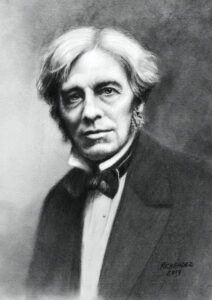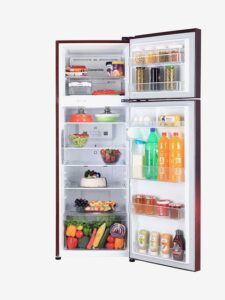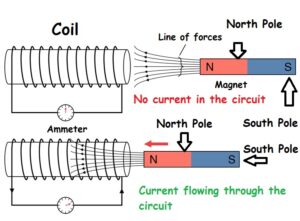Early Days
- Michael Faraday was born on September 22, 1791 in London, England, UK and lived till 25 August 1867.
- Michael Faraday attended a local school where he received a basic education.
- He was working as a bookbinder in a book shop and he spent his free time reading the books he had bound.
- Faraday started working at the Royal Institution of Great Britain on March 1, 1813.
- Faraday gave his first ever lecture, on the properties of matter, to the City Philosophical Society in 1816 and he published his first ever academic paper, discussing his analysis of calcium hydroxide, in the Quarterly Journal of Science.
- He was promoted to be Superintendent of House and Laboratory of the Royal Institution in 1821.
- He was elected to the Royal Society in 1824. This recognition was given to him as he had become a notable scientist in his own right.
- He became Director of the Royal Institution’s Laboratory in 1825.
- He became Fullerian Professor of Chemistry at the Royal Institution of Great Britain in 1833. He held this position for the rest of his life.
- He was offered the Presidency of the Royal Society in 1848, and again in 1858 but he turned it down.
Faraday's Inventions
Electromagnetic Rotation - Year 1821
- Faraday is best known for his work regarding electricity and magnetism.
- Hans Christian Ørsted discovered the phenomenon of electromagnetism in 1821.
- Faraday built two devices to produce what he called "electromagnetic rotation".
- One of these devices is now known as the homopolar motor, caused a continuous circular magnetic force around a wire that extended into a pool of mercury where a magnet was placed.
- The wire would then rotate around the magnet if supplied with current from a chemical battery.
- These experiments and inventions formed the foundation of modern electromagnetic technology.
Gas Liquefaction and Refrigeration - Year 1823
"Michael Faraday had shown that mechanical pumps could transform a gas at room temperature into a liquid. The liquid could then be evaporated, cooling its surroundings and the resulting gas could be collected and compressed by a pump into a liquid again, then the whole cycle could be repeated. This is the basis of how modern refrigerators and freezers work."
- Faraday used high pressures to produce the first ever liquid samples of chlorine and ammonia.
- Faraday observed that when he allowed the ammonia to evaporate again, it caused cooling. This was called the ammonia liquefaction.
Electromagnetic Induction - Year 1823
- Faraday discovered that a varying magnetic field causes electricity to flow in an electric circuit.
- For example, When a horseshoe magnet is moved over a wire it produces an electric current, because the movement of the magnet causes a varying magnetic field.
- Faraday had shown that movement of a magnet could be turned into electricity. Faraday showed that the kinetic energy could be converted to electrical energy.
Electromagnetic Induction in Real Life
Rotation (kinetic energy) is converted into electricity using electromagnetic induction. The rotation can be produced by high pressure steam from coal, gas, or nuclear energy turning turbines or by hydroelectric plants or by wind-turbines.





